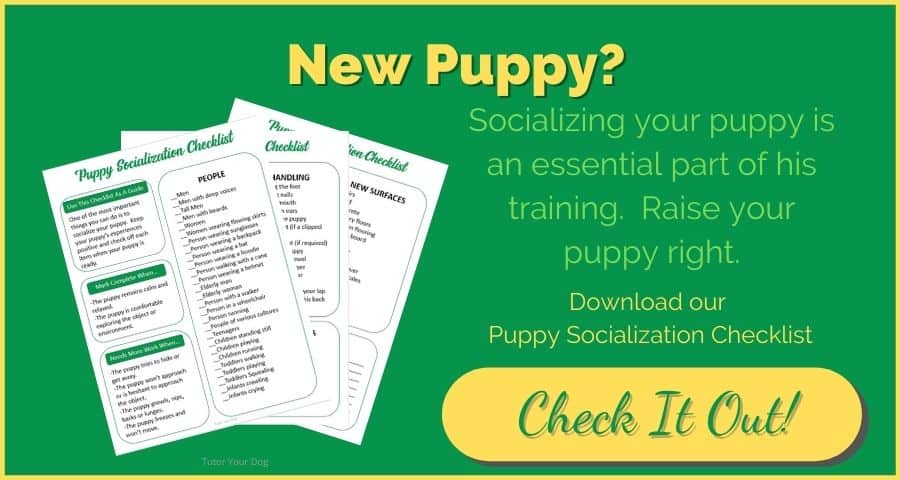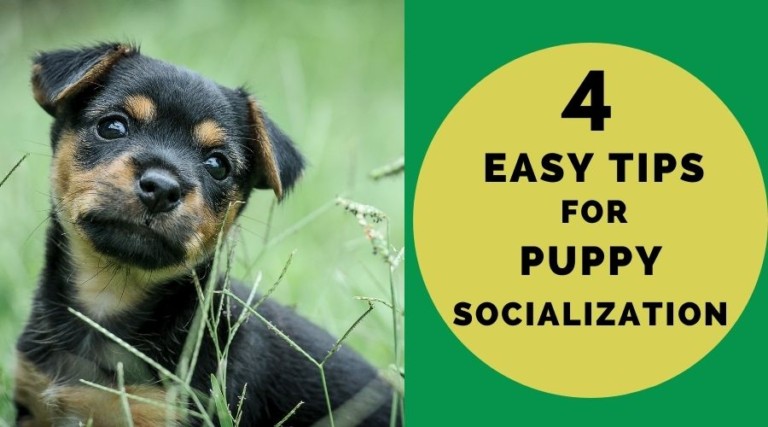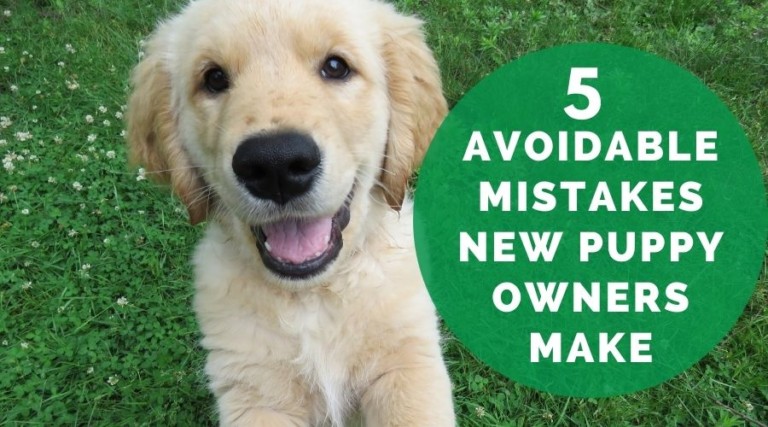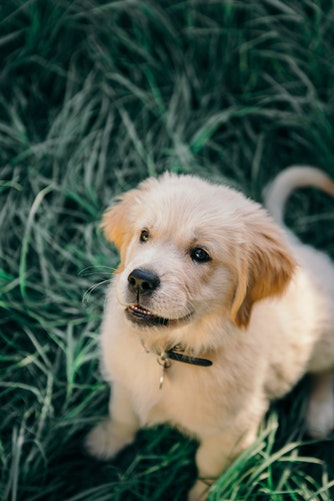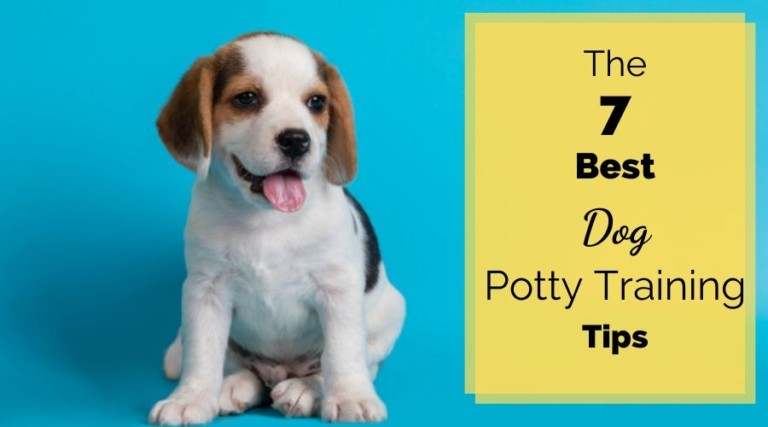{This post may contain affiliate links. This means we may make a small commission at no extra cost to you. This website is a participant in the Amazon Services LLC Associates Program. As an Amazon Associate we earn from qualifying purchases. We only recommend products that we believe will be of value to our followers. Click HERE to see our disclosure for details.}
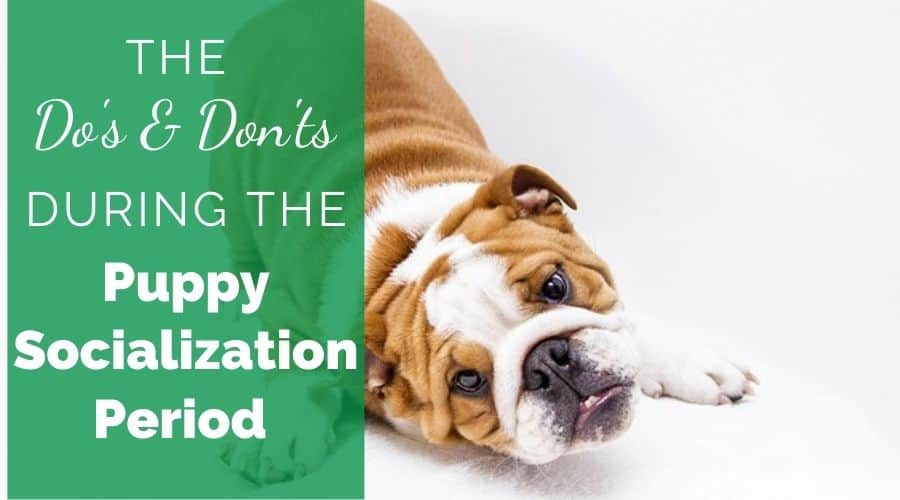
Teaching a puppy proper socialization skills during the prime puppy socialization period, is vital to the safety of both your dog and other dogs and people with whom he comes into contact. A properly socialized dog is a happy dog and a joy to be around for both humans and animals. A poorly socialized dog, or one with no socialization at all, can be a danger to other animals, other people and even his own family.
Why Do Puppies Need To Be Socialized?
A dog that is properly socialized will be neither frightened of nor aggressive towards either animals or humans. A properly socialized dog will take each new experience and stimulus in stride and not become fearful or aggressive. Dogs that are not properly socialized often bite because of fear. Such a dog can become a hazard and a liability to the family who owns him. Improperly socialized dogs are also unable to easily adapt to new situations. A routine matter like a trip to the vet or to a friend’s house can quickly stress the dog out and lead to all sorts of problems.
When Is The Prime Puppy Socialization Period?
Socialization is best done when the puppy is very young. Most experts agree that the best time to start is before 12 weeks of age. Even after 12 weeks, however, it is important that the puppy continues his socialization in order to refine the all important social skills. It is possible to socialize an older puppy, but it is very difficult to achieve after the all important 12 week period has passed.
There are some definite do’s and don’ts when it comes to properly socializing any puppy. Socialization that is done wrong can be just as harmful, or even more harmful, than not socializing your puppy at all. Let’s start with what to do. Later in this article we will explore what to avoid.
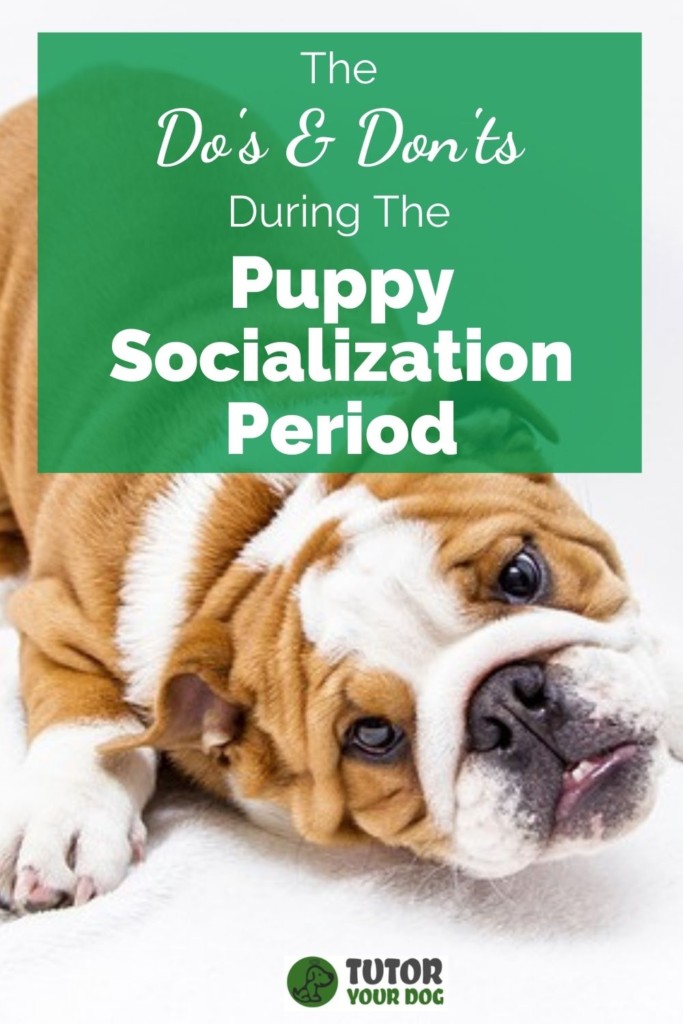
Socialization Do’s During The Puppy Socialization Period
1. Keep Things Positive And Pleasant
Make each of the socialization events as pleasant and non-threatening for the puppy as possible. If a puppy’s first experience with any new experience is an unpleasant one, it will be very difficult to undo that in the puppy’s mind. In some cases, an early trauma can morph into a phobia that can last for a lifetime. It is better to take things slowly and avoid having the puppy become frightened or injured.
2. Introduce Friendly People
Try inviting your friends over to meet the new puppy. It is important to included as many different people as possible in the puppy’s circle of acquaintances, including men, women, children, adults, as well as people of many diverse ethnic backgrounds and ages. Of course, make sure you don’t overwhelm your puppy. Invite only a few people over to meet your puppy at a time. Your friends can give your puppy a small treat when he greets them appropriately.
Click on the images below to check out our favorite dog training treats on Amazon.



4. Introduce Friendly Dogs And Other Animals
Invite friendly and healthy dogs and puppies over to meet your puppy. Or sign up for a puppy socialization class. This will allow your puppy to learn to play appropriately with other dogs. Make sure that any dog that you allow to interact with your puppy is good with puppies. A puppy that gets attacked by a dog during this puppy socialization period can develop fear aggression towards other dogs.
It is important for the puppy to meet a wide variety of other animals, including cats, hamsters, rabbits and other animals he is likely to meet. It is of course important to make sure that all animals the puppy comes into contact with have received all necessary vaccinations.
5. Go To Different Places
Take the puppy to many different places, including shopping centers, pet stores, parks, school playgrounds and on walks around the neighborhood. Try to expose the puppy to places where there will be crowds of people and lots of diverse activity going on. Going to locations with traffic as well as quieter parks will give your puppy lots of diversity.
6. Go For Car Rides
Take the puppy for frequent short rides in the car. During these rides, be sure to stop the car once in a while and let the puppy look out the window at the world outside. Make sure you travel safely with your puppy. There are crash tested crates and barriers available for your vehicle. If you are unable to use a crate, check out seatbelts made especially for dogs.
Click on the images below to check out safe travelling options for puppies from Amazon.



7. Introduce Common Objects
Introduce your puppy to a variety of items that may be unfamiliar. The puppy should be exposed to common items like bags, boxes, vacuum cleaners, umbrellas, hats, etc. that may be frightening to him. Allow and encourage the puppy to explore these items and see that he has nothing to fear from them.
8. Rearrange Familiar Items
Get the puppy used to a variety of objects by rearranging familiar ones. Simply placing a chair upside down, or placing a table on its side, creates an object that your puppy will perceive as totally new. Some puppies may not care at all about this but for some puppies, it will be like seeing something new for the first time again.
9. Introduce Common Procedures
Get the puppy used to common procedures like being brushed, bathed, having his nails clipped, teeth cleaned, ears cleaned, etc. Your groomer and your veterinarian with thank you for this. The more you get your puppy used to these things as a young puppy, the easier it will be for him to accept them when he is older.
Click on the images below to check out these dog care products on Amazon.



10. Introduce Common Items
Introduce the puppy to common things around the house, such as stairs. Stairs can seem intimidating to a puppy until he gets used to them. Introduce him to various flooring surfaces in your home like tile, wood, carpet, concrete. He should also be familiar with common household sounds such as blenders, TV’s, etc. Also introduce the puppy to the collar and leash, so he will be comfortable with these items.
Socialization Don’ts During The Puppy Socialization Period
There are of course some things to avoid when socializing a puppy. These socialization don’ts include:
1. Stay Away From Strange Animals
Do not place the puppy on the ground when strange animals are present. An attack, or even a surprise inspection, by an unknown animal could traumatize the puppy and hurt his socialization. Experiences like this could cause fear aggression towards this type of animal in the future.
Puppies also have immature immune systems so should only be introduced to healthy animals who are no risk of transmitting disease or parasites to your puppy.
2. Only Reward Appropriate Behavior
Do not inadvertently reward fear based behavior. When your puppy shows fear, it is normal to try to sooth him, but this could reinforce the fear based behavior and make it worse. To your puppy, when you are soothing him, he interprets your reaction as a reward. He then thinks that this is the behavior that you want him to display in this situation.
Since biting is often a fear based behavior, reinforcing fear can create problems with fear biting. When this happens, it is important to consult with a dog behaviorist right away before the problem escalates and someone gets hurt.

Even though socializing your puppy is one of the most important things that you can do for him, it has to be done properly and carefully.

